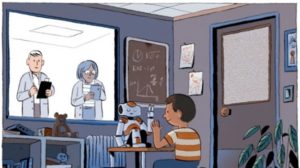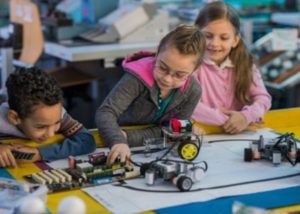Robotics and other combinations will make the world pretty fantastic compared with today.” – Bill Gates
What is a robot?
Have you ever pondered about your mail dog or a robot which delivers your mails and do whatever you command to make your life easier? Yes, you are correct. A robot is a machine which is designed to execute tasks without human involvement though it requires little guidance. And of course, it’s a new type of organism that will be a part of our lives.
Are Robots Real?
As we know, robots are only fantasized in movies like WALL-E and Star Wars. But now, fiction could be made a reality with the help of Science and Engineering. We have made so many technological breakthroughs such as the Boston Dynamics Spot, Handle and Atlas. In fact, a perfect example is Elon Musk and his breath-taking design of self-driving cars.

Man has invented astounding innovations using robotics technology such as the Mars Rover and satellites. Do you think that is all? Well, not really! We still proceed with improving on what we have created so far. Hence, the day that we will be surrounded by robots and other technological novelties won’t be a fantasy or another fictional movie but, a reality.
Why do we Need Robots?
Robotics Technology is considered as one of the best methods to way forward in solving real world problems. It helps to perform difficult tasks where man needs extra safety and conditions. For example, NASA uses robots in many experiments such as robotic arms to move very large objects in space.

What are the Five Types of Robots?
- Pre- Programmed Robots
- Humanoid Robots
- Autonomous Robots
- Tele-operated Robots
- Augmenting Robots
What are the Different Characteristics of Robots?
Robots involve some mechanical construction to fulfil tasks in the environment for which it’s primarily designed. In addition, robots depend on electrical components that control and power the machinery. Finally, robots comprise of at least considerable level of computer programming. Without a series of codes, a robot would simply be another piece of common machinery. Inserting a program into a robot enables it to apprehend when and how to execute a task.

What are these Designed for?
Pre – Programmed Robots
Capable of executing simple, monotonous tasks. Examples: Mechanical arm on an automotive assembly line.
Humanoid Robots
Appear like humans and imitate human behaviour like walking, running and lifting objects. Examples: Boston Dynamics Atlas and Hanson robotics’ Sophia.
Autonomous Robots
Designed to operate in open environments and do not require human supervision. They use sensors to recognize the world around them, and then employ decision-making structures.
Examples: Roomba and Automous Drone.
Tele – operated Robots
A robot type which uses a wireless network to enable human control from a safe distance and usually functions in extreme geographical conditions.
Examples: Drones used to detect landmines.
Augmenting Robots
Ability to enhance or replace present capabilities of a human.
Examples: Prosthetic limbs and exoskeletons used to lift heavy weights.
How Can we Adapt Robotics to our Lives?
One fundamental factor that influences and transforms diverse aspects of everyday life is the rapid expansion in the field of artificial intelligence and robotics. Thus, people ought to adapt to the new changes that will take place to ease the tasks of humans with the aid of robots. They are already being used in the place of spies, bank tellers, assembly-line workers and have taken over several phenomena in the field of medicine and defence.
So, are you ready to witness an era of robotics?
Well, well I believe all of us can give it a try too! Designing a robot is no rocket science my friends!
How about you try this at home!
A bristlebot is a simple and tiny robot you can build at home using a toothbrush. First, cut off the bristle end of the toothbrush and connect a small pre-isolated motor with some coin cell batteries. This little setup is quite easy to make, but the experience of building it is rewarding and fun for us.
By: Inuka Alwis
Grade 9 – Cambridge
Royal Institute (Gampaha Branch)

